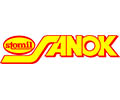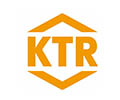Roller bearings offered by Prema SA come in a wide variety of types, designs, series, sizes, variants and materials. Depending on the bearing design there are:
BALL BEARINGS
The most widely used bearing type are single row ball bearings. They are simply constructed, offered in a very wide range of models and sizes. They are available for shaft diameters ranging from 1 to 2000mm and also in inch scale. Except uncovered, standard version there are offered bearings with shields, seals and with snap groove if needed. They are made as non-separable without a filling slot. Single row ball bearings feature relatively high dynamic load capacity in both radial and axial directions and also combined load in both directions.
Double row ball bearings correspond in design to single row ball bearings. Because of the two rows of balls carrying capacity of these bearings are considerable higher – at a slightly greater width – as single row bearings with the same hole diameter and the outer diameter.
Angular contact ball bearings are available in four main types (there are also many other versions):
- single row angular contact ball bearings which are capable of transferring axial force only in one direction – there are 72 and 73 series,
- double row angular contact ball bearings can accommodate radial loads as well as axial loads acting in both directions – they are produces in 32 and 33 series,
- four point contact ball bearings – are designed to support axial loads acting in both directions (for a given axial load, a limited radial load can be supported) – technically there are two types Q and QJ but Q type is practically phased out,
- super-precision angular contact ball bearings – are designed in order to accommodate combined radial and axial loads.
Self-aligning ball bearings discovered by SKF are designed with two rows of balls and round raceway on the outer ring. Can be produced with a cylindrical or tapered bore. The bearings are consequently self-aligning and insensitive to shaft deflections and angular misalignment of the shaft relative to the housing. Due to the small contact angle and imperfect adherence of the balls to the raceways, they are unsuitable for capturing greater axial forces.
Thrust ball bearings can be produced in two basic versions, as single direction or double direction. Standard single direction thrust ball bearings are made of a shaft and hub ring with races and of balls guided by a cage – this bearing can only transfer axial loads in one direction. Standard double direction thrust ball bearings have two cages with balls between the center shaft ring and two housing rings – this product are only capable of transferring axial forces in both directions.
Cylindrical roller bearings are available in many designs, dimensions and sizes. The main type is single row cylindrical roller bearing with a cage. This bearing can transfer big radial loads, what is more certain embodiments of this bearing are capable of capturing even axial load.
Cylindrical roller thrust bearings are design for solid and sustainable loadings and resistant to shock stressing. They are standardly offered as single direction bearings that can transfer axial loads only in one direction.
Needle roller bearings are made of small cylindrical rollers. They are design to reduce friction of a rotating surface. Needle bearings have a large surface area that is in contact with the bearing outer surfaces compared to ball bearings.
Needle roller thrust bearings are flat and use a radial pattern of needles. These bearings provide a high degree of stiffness within a minimum axial space.
Single row tapered roller bearings are designed to manage both thrust and radial loads on rotating shafts and in housings. They consist of four interdependent components: the cone, or inner ring; the cup, or outer ring; the tapered rollers, or rolling elements; and the cage, or roller retainer. The taper angles allow the bearing to handle a combination of radial and thrust loads.
Tapered roller thrust bearings enable axially very compact bearing arrangements to be produced which can carry very heavy axial loads, are insensitive to shock loads and are stiff.
Double row spherical roller bearings have two rows of spherical rollers with common spherical track in outer ring. This structure allows mutual tipping of rings. These bearings are designed to accommodate heavy radial and axial loads in both directions. Most of manufacturers offer several versions of spherical roller bearings that differ in the structure of the inner ring, cage and cage guidance.
Spherical roller thrust bearings use symmetrical rollers of barrel shape, rolling inside an outer race with a spherical inner surface. They can accommodate combined radial and axial loads and also accommodate misalignment of the shafts.
PLAIN BEARINGS
A plain bearing is the simplest type of bearing, comprising just a bearing surface and no rolling elements. The choice of the appropriate sliding contact surface combination is primarily determined by the way in which the load acts. Plain bearings are the least expensive type of bearing. They are also compact and lightweight, and they have a high load-carrying capacity.
The design of a plain bearing depends on the type of motion the bearing must provide. The three types of motions possible are: journal (friction, radial or rotary) bearing, linear bearing – this bearing provides linear motion, thrust bearing – a thrust bearing provides a bearing surface for forces acting axial to the shaft.
Integral plain bearings are built into the object of use. It is a hole that has been prepared into a bearing surface. Industrial integral bearings are usually made from cast iron and a hardened steel shaft is used in the bearing.
A bushing (or a bush) is an independent plain bearing that is inserted into a housing to provide a bearing surface for rotary applications. This is the most common form of a plain bearing. Common designs include solid (sleeve and flanged), split, and clenched bushings.
Two-piece plain bearings (full bearings) in industrial machinery are commonly used for larger diameters, such as crankshaft bearings. The two halves are called shells.






































